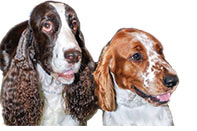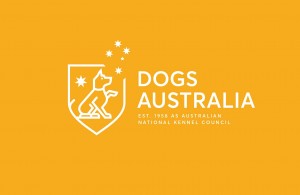DOGS AUSTRALIA: BREEDING AI STATEMENT (PRESS RELEASE)
Australian National Kennel Council Limited ABN 77 151 544 679 trading as Dogs Australia
PRESS RELEASE: DOGS AUSTRALIA BREEDING AND SURGICAL AI STATEMENT
Dr Karen Hedberg (BVSc) Sydney | Chairperson | Canine Health & Wellbeing Committee
→ A copy of this document is available for download > HERE
DOGS AUSTRALIA BREEDING STATEMENT.
Currently, under Dogs Australia regulations, the following regulations are in place:
♦ No bitch is permitted to be bred under the age of 12 months.
♦ No bitch is permitted to be bred over the age of 8 years unless a veterinary certificate of health is produced.
♦ Larger and Giant breeds (>25-30kg adult weight) may have additional restrictions of 18 months as the minimum breeding age.
♦ The maximum number of litters for a bitch’s lifetime is 6.
♦ The maximum number of litters in an 18-month period is 2.
The above National Dogs Australia minimums are enforced in individual states, but State and Government Territory restrictions also apply.
.
ARTIFICIAL INSEMINATION (AI) IN DOGS | GENERAL INFORMATION.
AI is used in dogs for several reasons. Typically, AI is used for bitches that may not be able to mate with another dog physically. In some circumstances, the dog may be interstate or overseas based, in which case AI may be the most practical option. Males and females can have fertility issues but still be genetically valuable to small gene pools. Alternatively, the dog may be physically incapable of mating the bitch. It can include bitches that have difficult internal anatomy (including congenital strictures) whereby normal mating is not possible, and other AI techniques are either less or not likely to be successful (including TCI). The semen may be fresh, chilled or frozen, depending on the circumstances and availability.
Australia, being an island continent relatively isolated from the main breeding centres (Europe and the Americas), is highly dependent on the use of frozen semen to bring in new bloodlines so that breeds maintain genetically healthy and diverse populations. There are difficulties in transporting dogs both within and to/from Australia. The ability to travel with live dogs due to long flights and immigration requirements is very restrictive, particularly for giant breeds. Further, many Brachycephalic breeds are currently banned from air transport altogether.
Frozen semen has been the main means of importing new bloodlines in most breeds for the last 30-40 years. The Greyhound industry has been and still is heavily reliant on the use of frozen semen, with over 80% of breeders using frozen semen as the main means of getting bitches pregnant. Within the Dogs Australia pedigree dogs, old stores of semen are often used to bring forward older lines/traits that would otherwise be lost.
Frozen semen has a very short post-thaw lifetime (around 12 hours). Results of the use of frozen semen show that the thawed semen must be placed intrauterine for successful conception. The amount of frozen semen required is 100 million live sperm per breeding unit (straws or pellets). Coupling surgical insemination with the use of progesterone blood level testing of the bitch to identify conception has greatly enhanced the success when using frozen semen over the last 10-15 years.
.
CANINE ANATOMY AND FOLLICAL MATURATION.
It should be understood that dogs have very different anatomy of the cervix from standard farm animals, and artificial insemination of fresh semen will only deposit semen into the vestibule of the cervix. Semen can only be deposited directly through the cervix with the use of rigid image scopes. Not all bitches can be successfully scoped.
Additionally, the follicles of dogs, unlike those of many other species, require a further 48-72 hours after ovulation to undergo final maturation in order to be fertiliserable. This requires the timing of insemination to be very precise if you wish to be successful, particularly when using frozen semen. Add to this the variable quality of the semen provided, and the results can be highly variable unless all involved in the collection, storage, and insemination are quite skilled in several areas.
.
STANDARD AI WITH FRESH SEMEN.
The majority of standard AI’s in dogs are carried out using catheters to deposit semen into the vestibule of the cervix. This technique is quick, takes about 5 minutes and is suitable for most bitches with the use of quality semen and correct timing.
Bitches with a history of infertility require further examinations as to the reasons for the apparent infertility. Poor semen (and poor frozen semen) from the dog may require the semen to be deposited directly into the uterus.
.
TRANSCERVICAL INSEMINATION (TCI).
Over the last 20 years, a more recent development, TCI, allows bitches to be inseminated while awake and standing. There are, however, restrictions to this technique.
1. The amount of live semen required is doubled (200 million live sperm per insemination)Bitches may need sedation for this technique.
2. Despite this, some bitches cannot be successfully inseminated and still require surgical insemination.
3. The equipment used for the insemination has been limited in its use in the smaller breeds.
4. No training courses for the correct technique have been available in Australia until very recently.
5. It requires a lot of experience to get increased success and reduced times.
6. Insemination times can vary from as short as 10 minutes to over 30 minutes by which time concerns over the continuing viability of the thawed semen increase. Semen is not usually thawed until after the catheter has reached the uterus.
7. Some bitches can become distressed and require heavy sedation to continue
.
SURGICAL AI.
1. This can be done within 10-15 minutes, much shorter that a standard spay operation.
2. The surgical site is minimal 1-2 inches maximum. Drugs can be given to minimise any pain.
3. The uterus and ovaries can be examined at the same time if required.
4. Half the amount of live sperm is required.
5. Semen that has been in cold storage for years has been purchased on the basis of needing 100 million live sperm per insemination.
6. Older stores of semen cannot be changed. Accordingly, if any restrictions are imposed, a grandfather clause should apply to its use regardless of any newer restrictions on the use of surgical AI. (Eg. Any such restriction does not apply to semen collected before 2024).
As can be seen from above, the reasons for the use of artificial insemination depend on a number of factors. The reasons for the use of surgical insemination can vary considerably depending on location, practicality, the best interests of the bitch (including breeding history) and the amount and quality of the semen available.
.
CONCLUSION.
The veterinarian treating the bitch should have the right to use the best technique available to obtain success with due consideration of all the factors and what is in the best interests of the animal’s welfare.
This is also important in maintaining genetic diversity, which may be critical in maintaining the health of certain breeds, particularly rare breeds.


